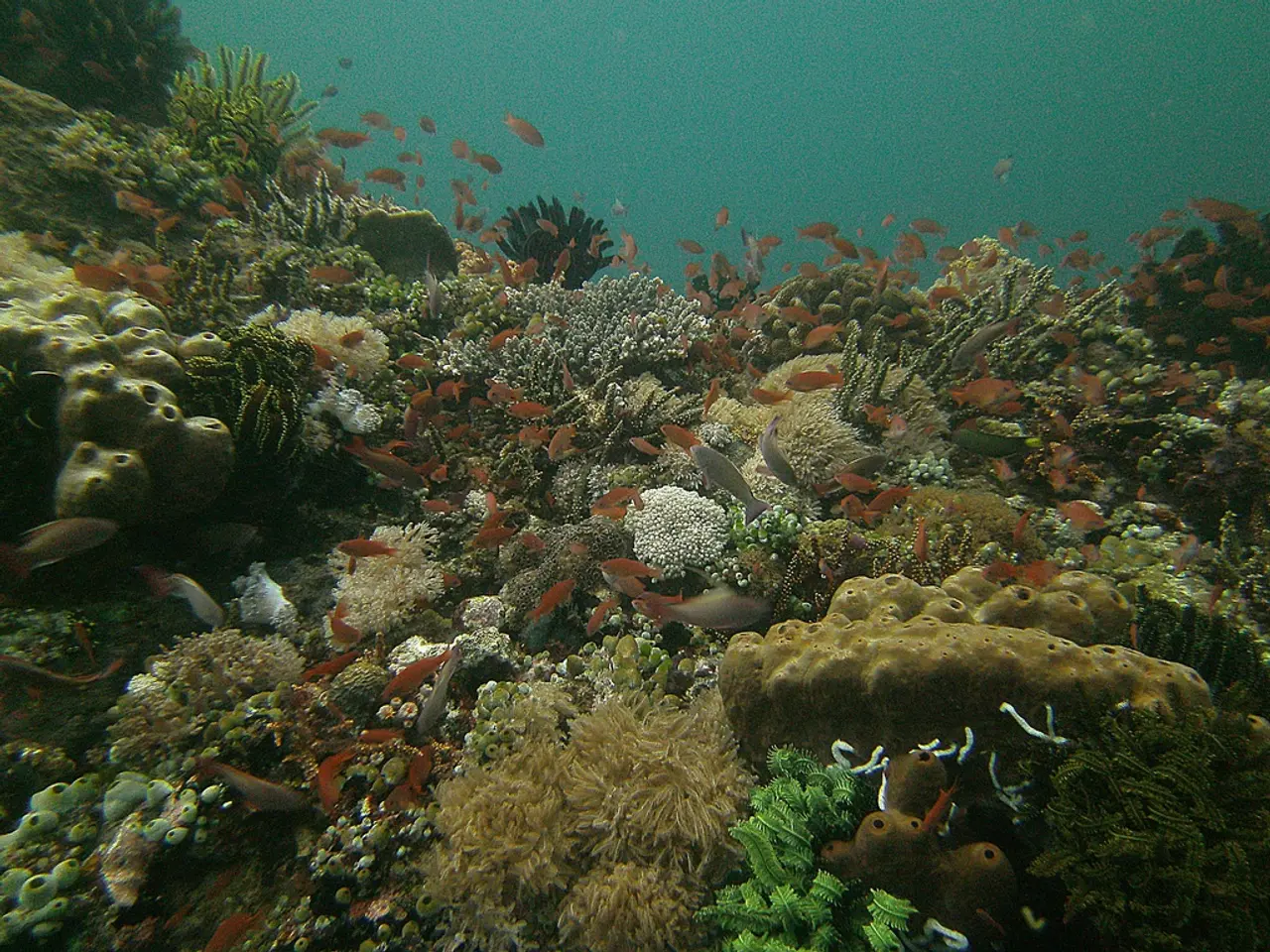Contamination in Water Evolves Beyond Sewage: The Emergence of Harmful Microchemicals in Drinking Supply Sources
In the intricate web of our planet, microplastics have emerged as a silent yet potent threat. These tiny fragments of plastic, barely visible to the naked eye, pose significant risks to human health and the environment [1][2][3][4].
Human exposure primarily occurs through ingestion of contaminated food and drinking water, inhalation, and skin contact. The average intake is estimated at around 50,000 microplastic particles per year per person [1][2][3][4]. Studies suggest that microplastics induce pro-inflammatory effects, vascular complications, and may disrupt normal embryonic development [1][2][3][4]. However, formal government assessments, such as the WHO's 2022 evaluation, consider the current evidence insufficient to definitively assess human health risks [1][2][3][4].
The health impacts of microplastics are far-reaching, encompassing hormonal disruption, infertility, neurological and cardiovascular disease risks, developmental defects, and infiltration of vital organs such as the brain, lungs, and heart [1][2][3][4]. Chemicals associated with microplastics act as toxins, provoking inflammation, developmental defects, and potentially contributing to diseases such as atherosclerosis, dementia, and congenital heart issues [1][2][3][4].
Addressing this global issue requires advanced filtration and water treatment technologies on a large scale, alongside systemic policy measures to reduce plastic pollution at its source. Conventional drinking water treatment can reduce some microplastics, but newer methods such as membrane filtration, advanced oxidation, or coagulation-flocculation are more effective [1][5]. However, a universal global strategy for widespread removal of microplastics from water supplies does not currently exist.
Efforts to curb microplastic exposure also emphasize reducing plastic production and pollution. International initiatives, including an upcoming legally binding United Nations treaty on plastic pollution, aim to limit plastic manufacturing and improve environmental controls. Recycling alone is insufficient, as it contributes to chemical spread and does not adequately reduce plastic waste [1][5].
Further research and formal government studies on microplastics’ health risks and mitigation strategies are crucial to inform effective global responses. For instance, the US bipartisan bill aims to investigate these effects [5]. Citizen platforms, such as the Plastic Soup Foundation (Netherlands) and Tap Score (USA), are enabling people to test and report water quality themselves.
In 2025, the Jal Jeevan Mission in India initiated pilot testing for PFAS and microplastics in rural water supplies. The European Union included medicines and PFAS on its Water Framework Directive's priority watchlist in 2024. A 2023 WHO study found microplastics in 83% of global tap water samples, including those from developed countries.
The microcontaminant crisis, which includes microplastics, pharmaceuticals, and PFAS, requires a new definition of water safety, accounting for microcontaminants, biological disruptions, and intergenerational health impacts. The Central Pollution Control Board acknowledged in 2024 that over 70% of wastewater plants in India cannot treat advanced pollutants like microcontaminants.
Innovative entrepreneurship is investigating nanofiltration, biosorption, and AI-enabled sensors that can identify microcontaminants in real time. Other microcontaminants may contribute to hormonal imbalances, early puberty, fertility problems, and immune dysfunction.
Pharmaceuticals can enter water systems through human excretion, improper disposal, and discharge from pharmaceutical factories. Current water treatment systems are not always effective in removing chemical microcontaminants like pharmaceuticals, microplastics, and PFAS. PFAS, or Per- and Polyfluoroalkyl Substances, are resistant to degradation and are found in everything from non-stick cookware to fast food packaging.
Excessive PFAS concentrations caused a health emergency in the Cape Fear River in North Carolina. These pharmaceuticals included household names such as antibiotics, antidepressants, and painkillers. Endocrine-disrupting chemicals are pervasive in detergents, pesticides, plastics, and medications. Lake Ontario in Canada and Vembanad Lake in India had high levels of microplastics.
In conclusion, the microplastics crisis is a pressing global concern with far-reaching implications for human health and the environment. A combination of advanced water treatment technologies, policy measures, and public awareness is necessary to mitigate this issue. Further research and international cooperation are crucial to develop effective strategies for addressing this silent threat.
- To combat microplastics, it's essential to focus on reducing plastic production and pollution, as international initiatives like the upcoming UN treaty on plastic pollution aim to do.
- In addition to reducing plastic pollution, advancing filtration and water treatment technologies on a large scale is required to remove microplastics from water supplies effectively.
- The health impacts of microplastics are significant, encompassing risks to human health, environmental science, and medical-conditions such as hormonal disruption, infertility, and neurological diseases.
- Research on microplastics' health risks and mitigation strategies is vital to inform global responses, with ongoing studies like the WHO's evaluations playing a crucial role.
- Citizen platforms enable people to test and report water quality, contributing to public awareness and prompting action against microplastic exposure.
- A universal global strategy and sustainable policies on a political level are necessary to tackle microplastic pollution at its source and ensure the safety of our health-and-wellness, environment, and environmental-science for future generations.








